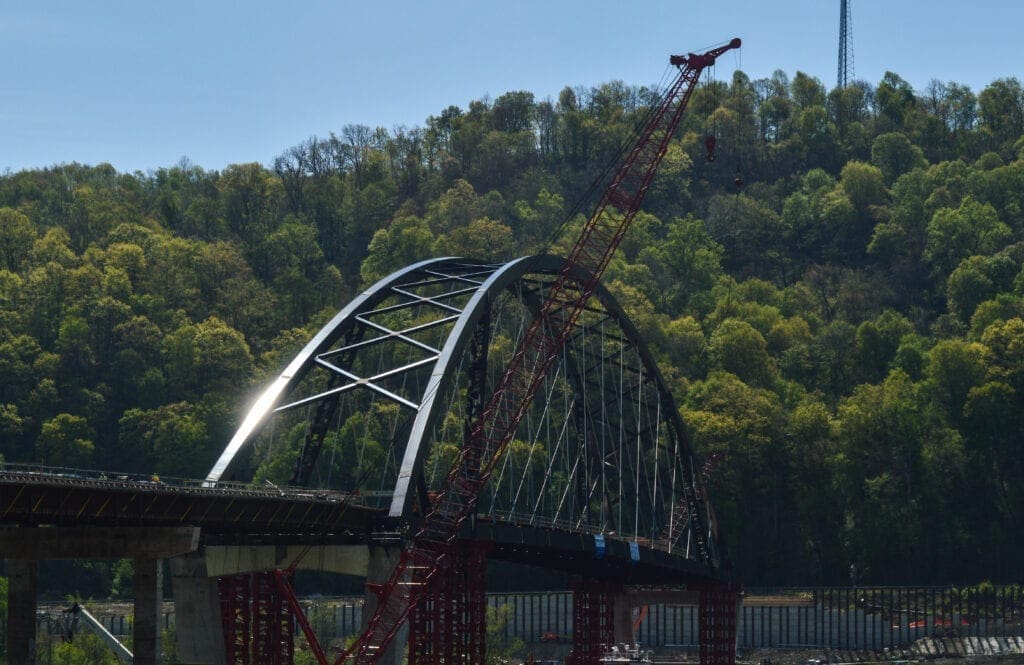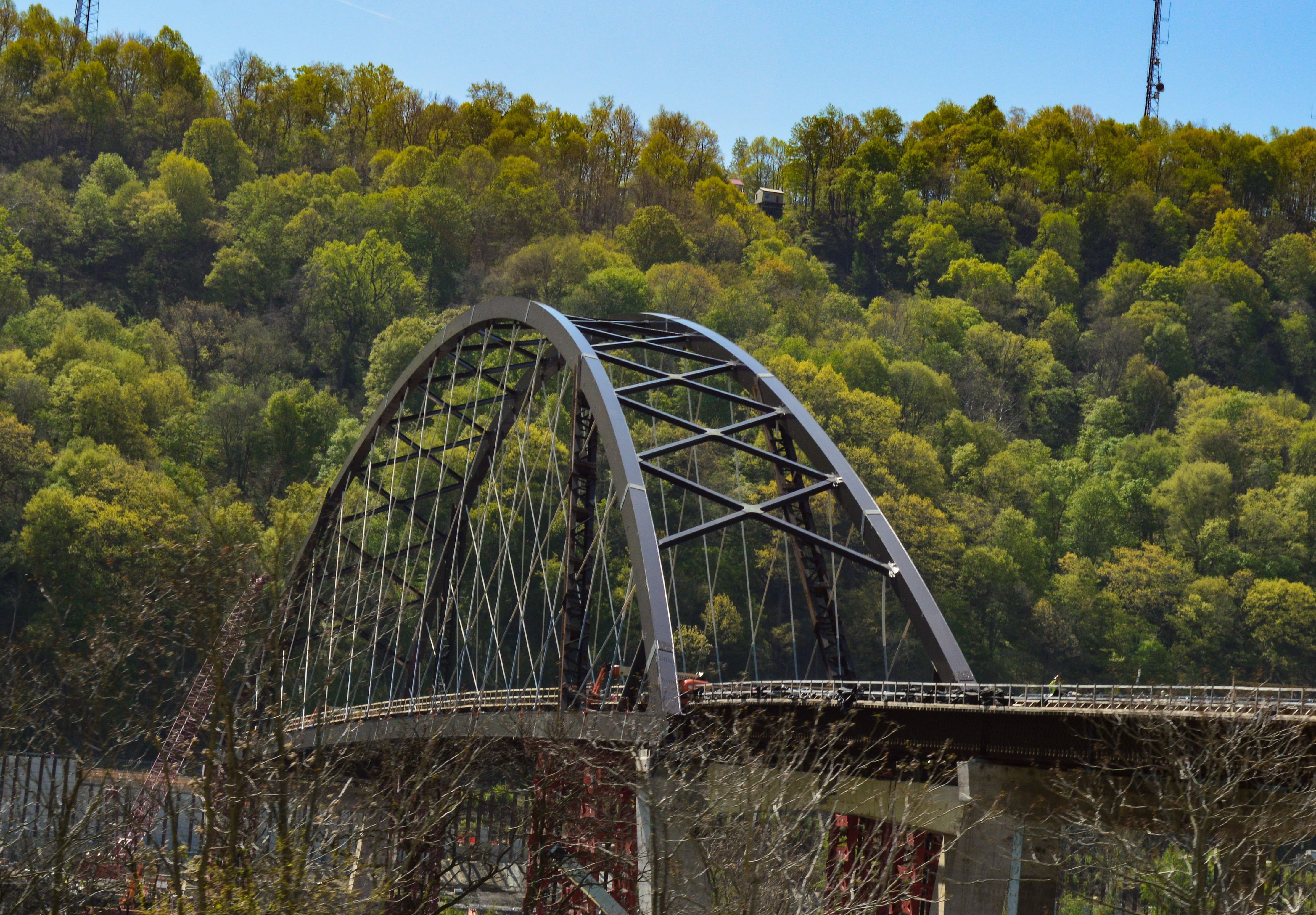The West Virginia Department of Transportation didn’t dictate that the arch for the new Wellsburg bridge had to be constructed about a mile north along the shore of the Ohio River.
Nope, that was the general contractor’s idea, and, according to WVDOH District Engineer Tony Clark, officials of Flatiron Construction won the design/build bid and have gone about their way instead of following the state-developed contracted scope.
“Flatiron bid $131 million and was awarded the project, and what they did this past week with the placement of the arch to the primary piers in the river was an amazing process,” he said. “That wasn’t a DOH feat; that was an accomplishment for everyone who was involved.
“I was just there to watch the process,” Clark insisted. “But, yes, it was an amazing thing to watch.”
The riverbank about a mile south of Wellsburg was altered to make room for the arch’s shoreline assembly yard, but all of those changes had to be approved by the state Department of Environment, the federal EPA, and the Army Corps of Engineers. At times, deputies with the Brooke County Sheriff’s Office had to assist with traffic issues involved with the supply delivery.
“The whole process started in mid-2018, and it’s been an interesting thing to watch,” the district engineer said. “But that arch did not have to be built the way it was built. This project was a design-build, so that gave them more freedom as far as how they wanted to go about it. We gave them general guidelines and then left the rest up to the company. So that arch was constructed by their means and methods.
“The DOH doesn’t build a lot of river crossings these days, and we do what we can to preserve the ones that we have now so we are not forced to replace the ones we have right now,” he said. “We know someday we will have to but there is nothing immediate right now.”

Not Just Yet
The arch, which measures 830 feet and weighs in at 8.2 million pounds, is merely just a piece of the puzzle, and that is why the span is not expected to open to traffic until late 2022.
Not only do the connections to the highways in both states need constructed, but the arch itself was transported to its piers without its decking.
“It could be completed sooner in 2022, but that just depends on how things go from now until then. The arch obviously is a big piece of the puzzle, but there’s a lot more work,” Clark said. “Not only do the connections need made with Ohio (Route) 7 and W.Va. (Route) 2, but they have to pour all of the concrete for the bridge decks, too.
“Plus, there’s a bunch of work they could have done on the shoreline, but they did not because of the weight aspect to this project,” the district engineer explained. “They wanted to slim it down as much as they could to make the move go as smoothly as possible.”

The New Way?
When the Fort Henry Bridge was constructed to extend Interstate 70 from the border of West Virginia to Ohio, construction workers performed the work while suspended above the Ohio River.
The same was true during the erection of the I-470 span and the Moundsville Bridge, but Flatiron’s riverbank method could become more popular in the years to come, according to Clark.
“I don’t know if that method of constructing the arch for a span has become the more popular way of doing it, and I have been asked that question before,” he said. “The project to this point has gone very well, and the construction of the arch went very smoothly, so it may be the best way to go about it in the future. If you have an area where the construction can take place like we saw in this case, I think it’s a pretty good way to do it.
“If it’s financially viable and works well for the company, I don’t see why others would not be done the same way,” Clark added. “The way I see it from a construction point of view is that the company’s employees were able to get all around that arch and people could get under it when they needed to, and they could run equipment in and out of it. I believe it was a lot easier to construct there on the shore than in the middle of the Ohio River.”


